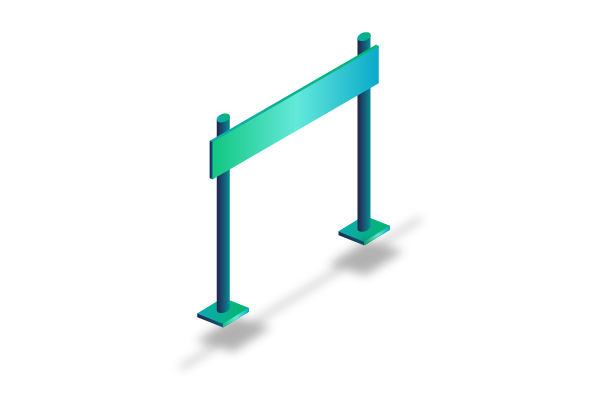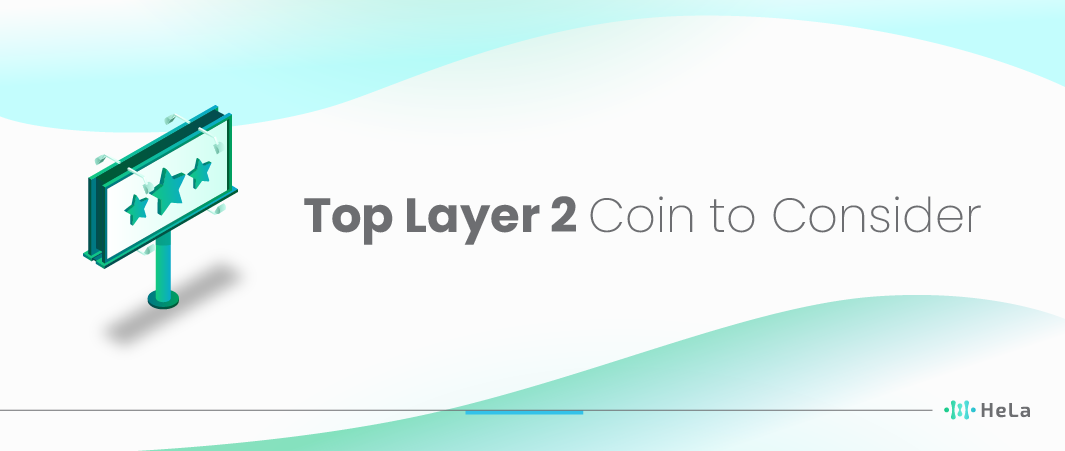As blockchain technologies continue to evolve, the need for solutions to its most pressing issues, primarily scalability, becomes more pressing. Layer 1 blockchains, like Bitcoin and Ethereum, have grappled with congestion and high transaction fees. These are secondary protocols built on top of an existing blockchain, aiming to increase transaction speeds and reduce costs. We’re delving into some of the most promising Layer 2 coins for 2025. We’ll uncover their unique features, the problems they aim to solve, and why they should be on every investor’s radar.
Layer 2 solutions, also known as “scaling solutions,” are not just a stopgap. They represent an essential evolution in blockchain tech, pushing boundaries and unlocking potentials previously hampered by scalability issues. As we head deeper into 2025, several Layer 2 coins have taken the limelight, promising users a better decentralized experience.
What is Layer 2?

A Layer 2 solution is like a booster seat for blockchains, making them faster and more efficient. Imagine your primary blockchain (Layer 1) as the main road, and Layer 2 solutions are like extra lanes that help ease traffic congestion. Instead of changing the main road itself, Layer 2 methods like State Channels, Sidechains, Rollups, and Plasma add these extra lanes on top.
These extra lanes process most transactions off the main road, which speeds things up. So, your Layer 1 blockchain can handle more transactions in a flash. If you’re looking for Layer 2 solutions, you might also want to check out the layer 2 coin list to see which cryptocurrencies are using these speed-boosting techniques.
Also Read: Web3 Grants – Next-Gen Project Funding
Layer 2 solutions are a bit like using express lanes during rush hour – they let you zip through transactions quickly. They work by handling most of the work off the main blockchain, only sending the final results to the main road when everything’s settled. This makes transactions speedy and can handle a lot more of them. So, if you’re a crypto enthusiast, keep an eye on the layer 2 coin list to see which coins are embracing these Layer 2 solutions for a smoother and faster experience.
Benefits of Layer 2 Coins

Layer 2 coins, also known as Layer 2 tokens or cryptocurrencies, are digital assets built on Layer 2 solutions of blockchain networks. These solutions are designed to address some of the limitations and challenges faced by Layer 1 blockchains, such as Bitcoin and Ethereum. Layer 2 coins come with several benefits:
Scalability
Layer 2 solutions, such as sidechains and state channels, enable blockchain networks to process a higher volume of transactions per second. This scalability is crucial for mass adoption and widespread use of cryptocurrencies.
Reduced Transaction Costs
Layer 2 coins often come with lower transaction fees compared to their Layer 1 counterparts. This makes microtransactions and frequent transfers more practical, as users can avoid high gas fees.
Faster Transaction Confirmation
Layer 2 solutions offer faster confirmation times for transactions. This is especially important for applications like decentralized exchanges (DEXs), gaming platforms, and other real-time use cases where immediate confirmation is essential.
Energy Efficiency
Some Layer 2 solutions, like sidechains, can be more energy-efficient than Layer 1 blockchains. This is important for environmentally conscious users and investors.
Enhanced Privacy
Certain Layer 2 solutions, such as zk-rollups and other advanced cryptographic techniques, provide improved privacy features. Users can conduct transactions with a higher level of anonymity and security.
Interoperability
Layer 2 coins can often interact with multiple Layer 1 blockchains, increasing their interoperability. This allows for more flexible use cases and a broader range of supported assets.
Smart Contract Functionality
Some Layer 2 solutions enable the execution of smart contracts, just like on Layer 1 blockchains. This expands the range of decentralized applications (DApps) that can be built on Layer 2.
Reduced Network Congestion
By offloading a significant portion of transactions to Layer 2, Layer 1 blockchains experience less network congestion, leading to smoother operation and reduced waiting times.
Security
Layer 2 solutions are designed with security in mind, leveraging the security of the underlying Layer 1 blockchain. This helps protect user funds and maintain trust in the ecosystem.
Community and Development Growth
The development and adoption of Layer 2 solutions have spurred innovation and growth in the blockchain and cryptocurrency community. This encourages more projects to build on these networks and contributes to the overall maturity of the space.
Layer 2 coins offer a range of benefits, including scalability, reduced costs, faster transactions, energy efficiency, enhanced privacy, interoperability, smart contract functionality, reduced network congestion, enhanced security, and growth in the blockchain community. These advantages make Layer 2 solutions a compelling option for those seeking to improve the performance and functionality of blockchain networks while maintaining a connection to the security and decentralization of Layer 1 blockchains.
List of Top Layer 2 Coins to Consider in 2025

In the world of cryptocurrency, staying informed about the latest developments and trends is essential, as the market is constantly evolving. In 2025, there are several Layer 2 coins that have garnered significant attention and are worth watching closely. Layer 2 solutions are a crucial component of the blockchain ecosystem, as they aim to enhance the scalability and efficiency of blockchain networks. Here are top Layer 2 coins to keep a close eye on in 2025:
1. Optimism (OP)
Optimism has been making waves in the cryptocurrency space with its foundation firmly rooted in Ethereum’s platform. Using the innovative technology of optimistic rollups, it devised a way to accelerate transactions, making the entire Ethereum network more efficient.
This solution not only promises improved speeds but also ensures a sustainable future for the Ethereum ecosystem. Its native coin’s increasing prominence further underscores the potential and growth prospects of this Layer 2 solution.
Key Features:
- Reduces gas fees significantly
- Compatible with Ethereum tools and services
- Supports smart contracts
- Secure against fraud with challenge periods
2. ZKsync (ZK)
zkSync is a Layer 2 scaling solution for Ethereum, utilizing zero-knowledge rollups to enhance transaction speed and reduce costs. By leveraging zero-knowledge cryptography, zkSync aims to increase blockchain transaction speeds and lower fees.
Key Features:
Zero-Knowledge Rollups: zkSync employs zero-knowledge rollups to bundle multiple transactions into a single one, reducing costs and increasing transaction speed without compromising security.
High Throughput: The platform aims to achieve over 10,000 transactions per second (TPS) by 2025, significantly enhancing scalability.
Low Transaction Fees: zkSync plans to reduce transaction fees to as low as $0.0001 by 2025, making it more accessible for users and developers.
Market Performance:
As of February 10, 2025, zkSync’s native token, ZKS, is trading at $0.00432265 USD, with an intraday high of $0.0047604 USD and a low of $0.00369856 USD.
3. Polygon (MATIC)
Polygon, which began its journey as the Matic Network, has emerged as a close companion to Ethereum in its scaling endeavors. This multi-chain solution serves as a versatile platform, enhancing Ethereum’s capabilities while ensuring that the blockchain remains agile. The surging popularity and adoption of its native token, MATIC, is a testament to the project’s vision and its resonating impact on the community.
Key Features:
- Flexible framework supporting multiple Layer 2 solutions
- Offers SDKs for building custom networks
- Seamless asset interchange with Ethereum
- Robust developer ecosystem and support
4. Arbitrum (ARB)
Arbitrum is another gem in the Layer 2 crown. Operating seamlessly on Ethereum, it introduces a unique rollup mechanism, ensuring transactions are managed efficiently off the main chain. This system is pivotal in enhancing throughput, ultimately leading to a more scalable and cost-effective Ethereum. The ease of use and integration that Arbitrum brings makes it a favorite among developers and users alike.
Key Features:
- Reduces gas costs
- Offers compatibility with Ethereum dApps
- Simplifies Layer 2 development with familiar tools
- Provides a robust environment for developers
5. Manta Network (MANTA)
Manta Network is a privacy-focused Layer 2 solution for Ethereum, leveraging zero-knowledge (ZK) technology to enhance transaction confidentiality and scalability. It comprises two main components:
Manta Pacific: An Ethereum Virtual Machine (EVM)-compatible Layer 2 platform designed for efficient and private transactions.
Manta Atlantic: A privacy-centric identity management system utilizing zero-knowledge Soulbound Tokens (zkSBTs).
As of January 2024, Manta Network has emerged as a significant player in the Layer 2 space, ranking among the top Ethereum Layer 2 networks by Total Value Locked (TVL).
Analysts project a positive outlook for Manta Network’s native token, MANTA, with price predictions for 2025 ranging from a minimum of $3.03 to a maximum of $3.60.
Given its innovative approach to privacy and scalability, Manta Network is considered a noteworthy Layer 2 project to monitor in 2025.
6. Immutable (IMX)
Immutable X (IMX) is a Layer 2 scaling solution for Ethereum, specifically designed to enhance the performance of non-fungible tokens (NFTs) and gaming applications. By utilizing zero-knowledge rollups, Immutable X offers instant trade confirmations, massive scalability, and zero gas fees without compromising security.
As of early 2024, Immutable X has demonstrated steady growth, with the IMX token trading at approximately $1.64 and a market capitalization of $2.73 billion.
Analysts have projected a positive outlook for IMX in the coming years. DigitalCoinPrice forecasts that IMX could reach $4.73 by 2025, with potential for further growth in subsequent years.
Given its innovative approach to scaling NFTs and gaming on Ethereum, Immutable X is considered a noteworthy Layer 2 project to monitor in 2025.
7. AEVO (AEVO)
Aevo is a high-performance decentralized derivatives exchange focusing on options and perpetual contracts. Built on a custom Ethereum Layer 2 solution utilizing the OP Stack, Aevo offers enhanced throughput and performance while maintaining Ethereum’s security.
Key Features:
Product Ecosystem: Aevo supports options, perpetual futures, and other products within a single margin account, combining off-chain matching with on-chain settlement for unparalleled performance and latency.
Layer 2 Architecture: Operating on an Ethereum-based rollup, Aevo’s smart contracts run on the Aevo Rollup, an EVM-based Ethereum optimistic roll-up. Trades are created and settled on the smart contracts, with a dispute period of 2 hours for transactions on the Aevo Rollup.
Market Performance: As of February 10, 2025, Aevo’s native token, AEVO, is trading at $0.15474 USD, with a 24-hour trading volume of approximately $35 million. The token has a circulating supply of 902 million AEVO coins and a market capitalization of around $136 million.
Given its innovative approach to decentralized derivatives trading and its robust Layer 2 infrastructure, Aevo is a noteworthy project to consider in the Layer 2 space for 2025.
8. Mantle (MNT)
Mantle is a Layer 2 scaling solution for Ethereum, designed to enhance transaction speed and reduce costs for decentralized applications (dApps) and smart contracts. By leveraging advanced technologies, Mantle aims to address scalability issues inherent in many blockchain networks.
Key Features:
Scalability and Efficiency: Mantle enhances the speed and efficiency of transactions on blockchain networks, providing a more scalable and cost-effective environment for dApps and smart contracts.
Decentralization: As a decentralized cryptocurrency, Mantle operates on a Layer 2 scaling solution, aiming to offer lower transaction fees and faster processing times compared to traditional Layer 1 solutions.
Market Performance:
As of February 10, 2025, Mantle’s native token, MNT, is trading at $1.019 USD, with an intraday high of $1.068 USD and a low of $0.986421 USD.
9. SKALE (SKL)
SKALE Network is an open-source, Ethereum-native multichain network designed to scale decentralized applications (dApps) efficiently. It offers zero gas fees, instant finality, and high throughput, making it suitable for various applications, including gaming, AI, and decentralized finance (DeFi).
Key Features:
Zero Gas Fees: SKALE provides a gas-free environment for dApp developers and users, enhancing the user experience and reducing operational costs.
High Throughput and Instant Finality: The network supports high transaction volumes with instant finality, ensuring fast and reliable transaction processing.
Modularity: SKALE’s architecture allows for the creation of application-specific sidechains, offering flexibility and customization for developers.
Market Performance:
As of February 10, 2025, SKALE’s native token, SKL, is trading at $0.03845 USD, with an intraday high of $0.03986 USD and a low of $0.03670 USD.
10. Loopring (LRC)
Loopring (LRC) is a Layer 2 scaling solution for Ethereum, focusing on enhancing the performance of decentralized exchanges (DEXs) and payment systems. By utilizing zkRollups, Loopring offers high throughput, low-cost transactions, and robust security, making it a significant player in the Layer 2 ecosystem.
Key Features:
zkRollups Technology: Loopring employs zkRollups to bundle multiple transactions into a single one, reducing costs and increasing transaction speed without compromising security.
Decentralized Exchange (DEX) Support: It enables the creation of high-performance DEXs, allowing users to trade assets with minimal fees and fast settlement times.
Payment Solutions: Loopring provides solutions for low-cost, high-speed payments, facilitating microtransactions and enhancing user experience.
Market Performance:
As of February 10, 2025, Loopring’s native token, LRC, is trading at $0.1259 USD, with an intraday high of $0.1329 USD and a low of $0.1226 USD.
Challenges Facing Layer 2 Solutions

Layer 2 solutions refer to technologies and protocols that are designed to improve the scalability and efficiency of blockchain networks, primarily by processing transactions off-chain or in a way that minimizes the load on the underlying Layer 1 blockchain (e.g., Ethereum, Bitcoin).
These solutions have gained significant attention due to their potential to address some of the limitations of Layer 1 blockchains, such as slow transaction processing and high fees. However, they also face various challenges, some of which are outlined below:
Security Concerns
Layer 2 solutions often involve trust in third-party intermediaries or the execution of smart contracts on Layer 2 networks. This can introduce security risks, as the security model may differ from that of the underlying blockchain, making Layer 2 networks potentially vulnerable to attacks.
Interoperability
Different Layer 2 solutions may have their own standards and protocols, making it challenging to ensure seamless interoperability and communication between these networks. Efforts are underway to address this issue through initiatives like the Interledger Protocol (ILP) and cross-chain bridges.
Adoption and User Experience
For Layer 2 solutions to be effective, they must gain widespread adoption. Users and developers need to be incentivized to migrate to these solutions. Ensuring a smooth transition and user-friendly interfaces is crucial for this adoption to happen.
Centralization Risk
Some Layer 2 solutions can become overly centralized, either due to the control of specific entities or because they rely on a limited number of validators or operators. This can undermine the decentralization goals of blockchain technology.
Exit Consensus
Layer 2 solutions often require a mechanism for users to “exit” back to the Layer 1 blockchain, especially in cases of disputes or network failures. Ensuring fair and secure exit mechanisms is a challenge in many Layer 2 designs.
Data Availability
For Layer 2 solutions that rely on the storage of transaction data off-chain, there is a need to ensure the availability and integrity of this data. Data availability challenges, including the risk of data unavailability or manipulation, need to be addressed.
Regulatory Compliance
As blockchain technology matures, regulators are paying more attention to Layer 2 solutions. Ensuring compliance with evolving regulatory requirements can be a significant challenge.
Economic Models
Designing sustainable and equitable economic models for Layer 2 solutions, including tokenomics and incentives for validators, users, and developers, is an ongoing challenge.
Privacy and Confidentiality
Layer 2 solutions that handle sensitive or confidential data must provide robust privacy and security features. Balancing transparency and privacy is a complex challenge.
Network Effects
The success of Layer 2 solutions is closely tied to network effects. For many use cases, the value of a Layer 2 network grows as more users and assets are onboarded. Overcoming the chicken-and-egg problem of network effects can be a challenge.
While Layer 2 solutions hold significant promise for addressing the scalability and efficiency issues of Layer 1 blockchains, they face various challenges related to security, interoperability, adoption, and regulatory compliance. Addressing these challenges will be critical for the continued development and success of Layer 2 technologies.
The Future of Layer 2 and Beyond
As the blockchain space keeps growing up, Layer 2 solutions are becoming increasingly crucial for its progress. These solutions help scale and enhance the efficiency of blockchains. With continuous research and development, we might even witness more ingenious approaches that blur the boundaries between Layer 1 (the main blockchain) and Layer 2, giving users the benefits of both worlds. Currently, we’re observing an emerging trend in the Layer 2 coin list, showcasing a variety of cryptocurrencies utilizing Layer 2 scaling solutions for faster and cheaper transactions.
Also Read: Blockchain Adoption: Revolutionizing Transparency
While Layer 2 is the talk of the town, it’s essential to remember that technology keeps advancing. Layer 3 and beyond might not be widespread discussions today, but as we move forward, the possibilities are wide open. It’s hard to predict precisely what the future holds for blockchain technology, but with innovation and ongoing progress, it’s safe to say we can expect exciting developments that could reshape the entire landscape. So, as we explore the Layer 2 coin list today, we must also stay curious about what might emerge in the world of Layer 3 and beyond tomorrow.
Conclusion
Layer 2 coins represent a bold step forward in the world of blockchain. They address some of the most pressing issues faced by Layer 1 chains and offer a glimpse into the potential future of decentralized technologies. As we’ve highlighted, numerous Layer 2 coins are making waves in 2025, each offering unique solutions to age-old problems.
For investors and enthusiasts alike, keeping a close eye on the developments in this space is crucial. As adoption grows and more projects emerge, Layer 2 coins and solutions will likely become as ubiquitous as the foundational blockchains they enhance.
In a rapidly evolving digital landscape, Layer 2 might just be the bridge to a more scalable, efficient, and inclusive decentralized future.
Disclaimer: The information provided by HeLa Labs in this article is intended for general informational purposes and does not reflect the company’s opinion. It is not intended as investment advice or recommendations. Readers are strongly advised to conduct their own thorough research and consult with a qualified financial advisor before making any financial decisions.

Hi, I'm Carina, and I've been captivated by the world of web3 for as long as I can remember. Ever since I first dipped my toes into this innovative technology, I've found myself drawn to exploring and understanding its infinite potential. The complexities of layer 1 solutions particularly intrigue me, as they form the foundation of decentralized networks and pave the way for a more transparent and efficient digital landscape.
- Carina Caringalhttps://helalabs.com/blog/author/carina-caringal/
- Carina Caringalhttps://helalabs.com/blog/author/carina-caringal/
- Carina Caringalhttps://helalabs.com/blog/author/carina-caringal/
- Carina Caringalhttps://helalabs.com/blog/author/carina-caringal/

